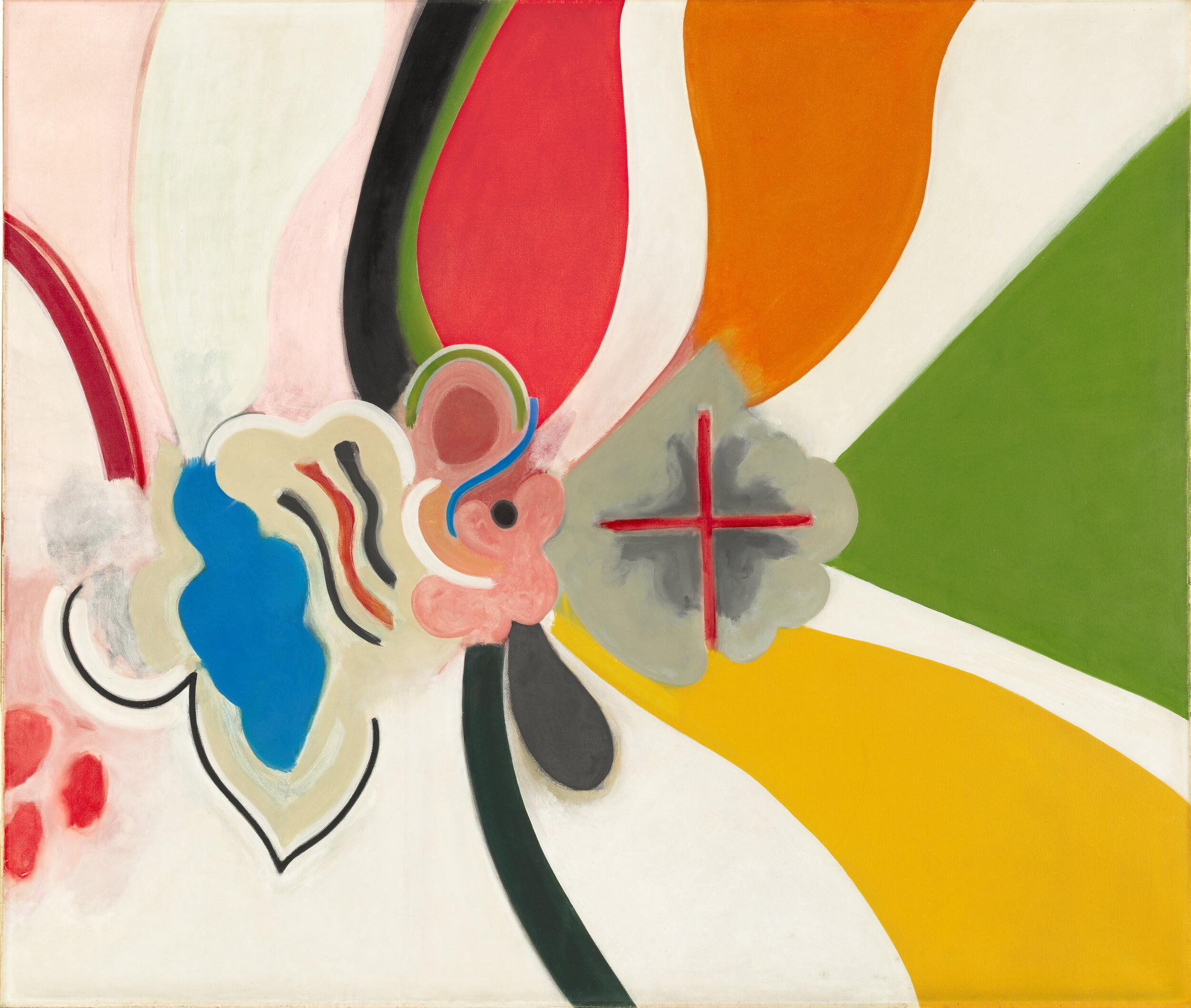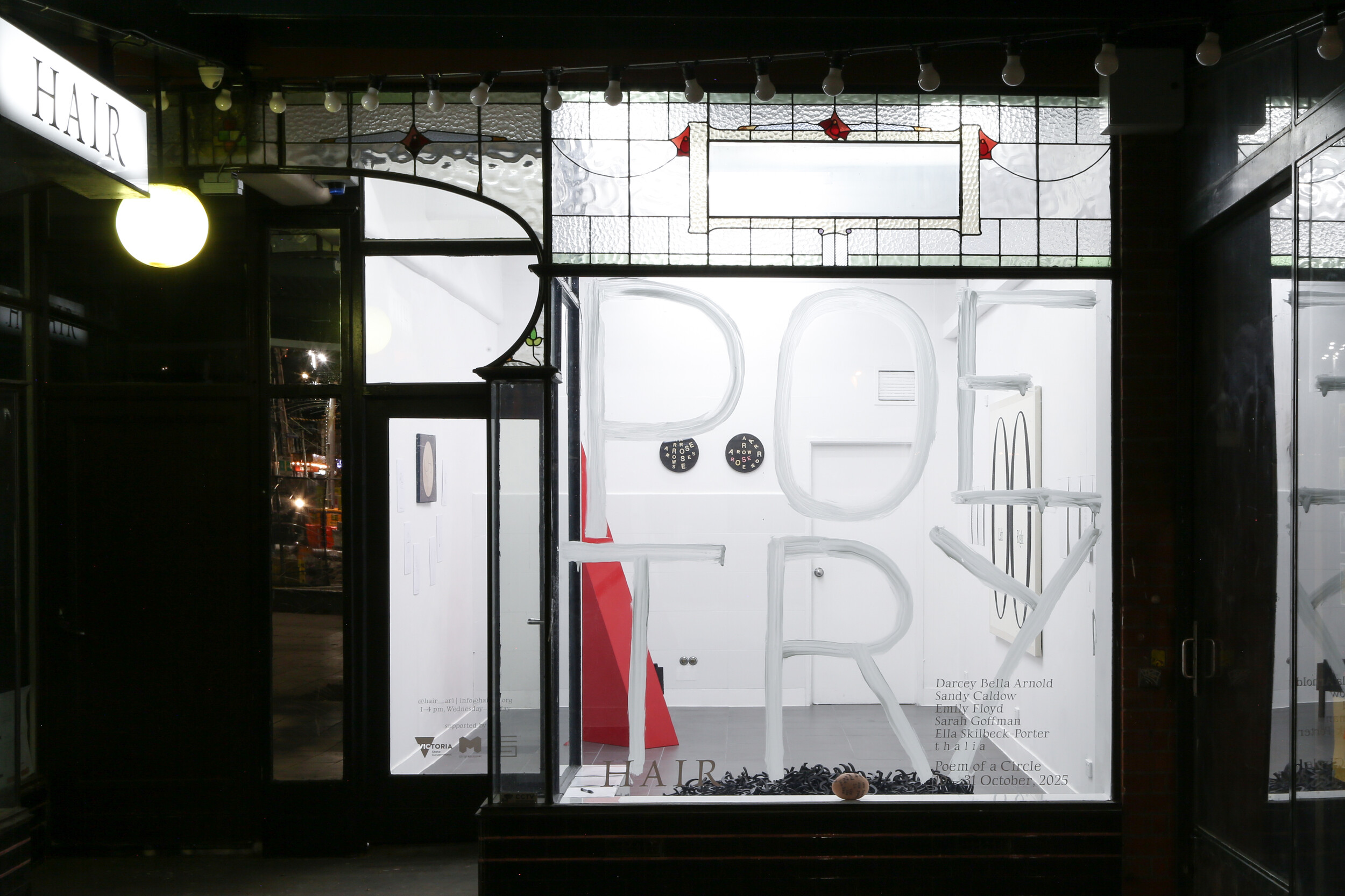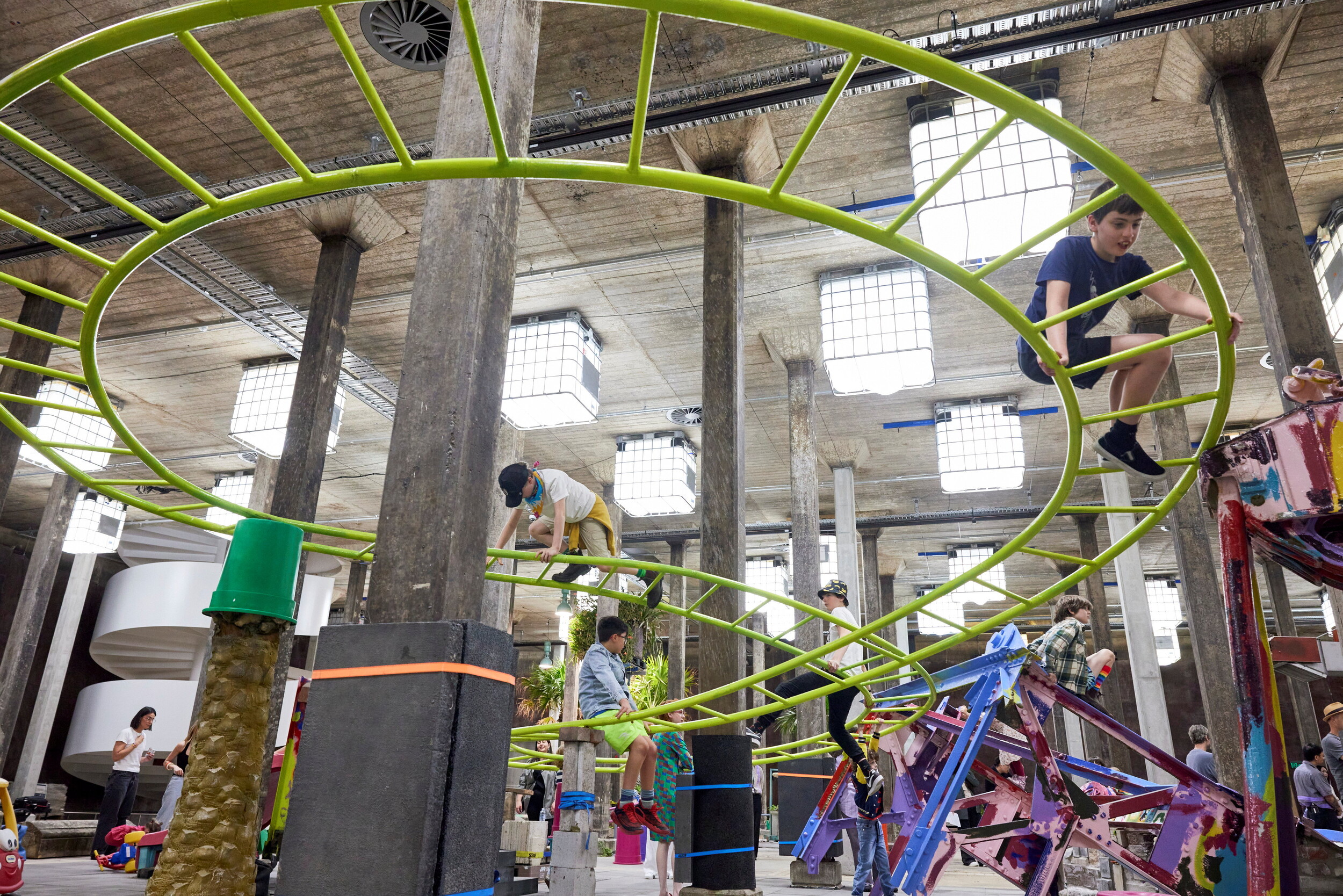Installation view of Ayman Kaake, Stones Will Remain Stones, 2025, mixed media installation, 230 x 285 x 100 cm (foreground) and See, 2025, single channel video, 6 minutes 47 seconds (background). Photo: Simon Aubor
Misbaḥa / The Prayer Beads / مسبحة
Celine Saoud
When I think of Misbaḥa, I think of Arab men.
I think fondly of my older male relatives who fidget with them as they play cards or backgammon, aggressively shake them at the evening news reporter on TV for saying something they didn’t like, or twirl them behind their backs as they take the lead of the dabke at a wedding. They have become, at least to me, such an unwavering symbol of Arab masculinity that I’m willing to place a bet that every baba and 3amo keeps one tucked away in their pocket or bedside table, just in case.
In Islam, Misbaḥa are used to recite the glorifications of Allah, counting each of the thirty-three (or, in bigger Misabeḥ, ninety-nine) beads to guide your prayer. For Lebanese-born, Melbourne-based artist Ayman Kaake, his connection to Misbaḥa is made complex by his identity as a queer Lebanese Muslim man. While Kaake is assured in both his faith and identity, for some queer Arabs the Misbaḥa can be used as a tool to conceal their true identity.
Homosexuality was first criminalised in Lebanon in 1943 on the grounds it corrupted the “traditional family unit” as the foundation of society. The legislation of Article 534 into the Lebanese Penal Code has resulted in targeted campaigns of criminal convictions and wider social isolation of the LGBTQIA+ community. At the root of queer prejudice in Lebanon is a complex entanglement of French occupation, culture, religion and patriarchy, and this exhibition does not aim to dismantle the entire Lebanese political landscape, nor magically heal decades of LGBTQIA+ trauma in just a few works. Misbaḥa / The Prayer Beads at Counihan Gallery instead pushes this crucial object of Lebanese identity beyond its physical form, making it into a symbol of the societal pressures faced by queer Arab men.
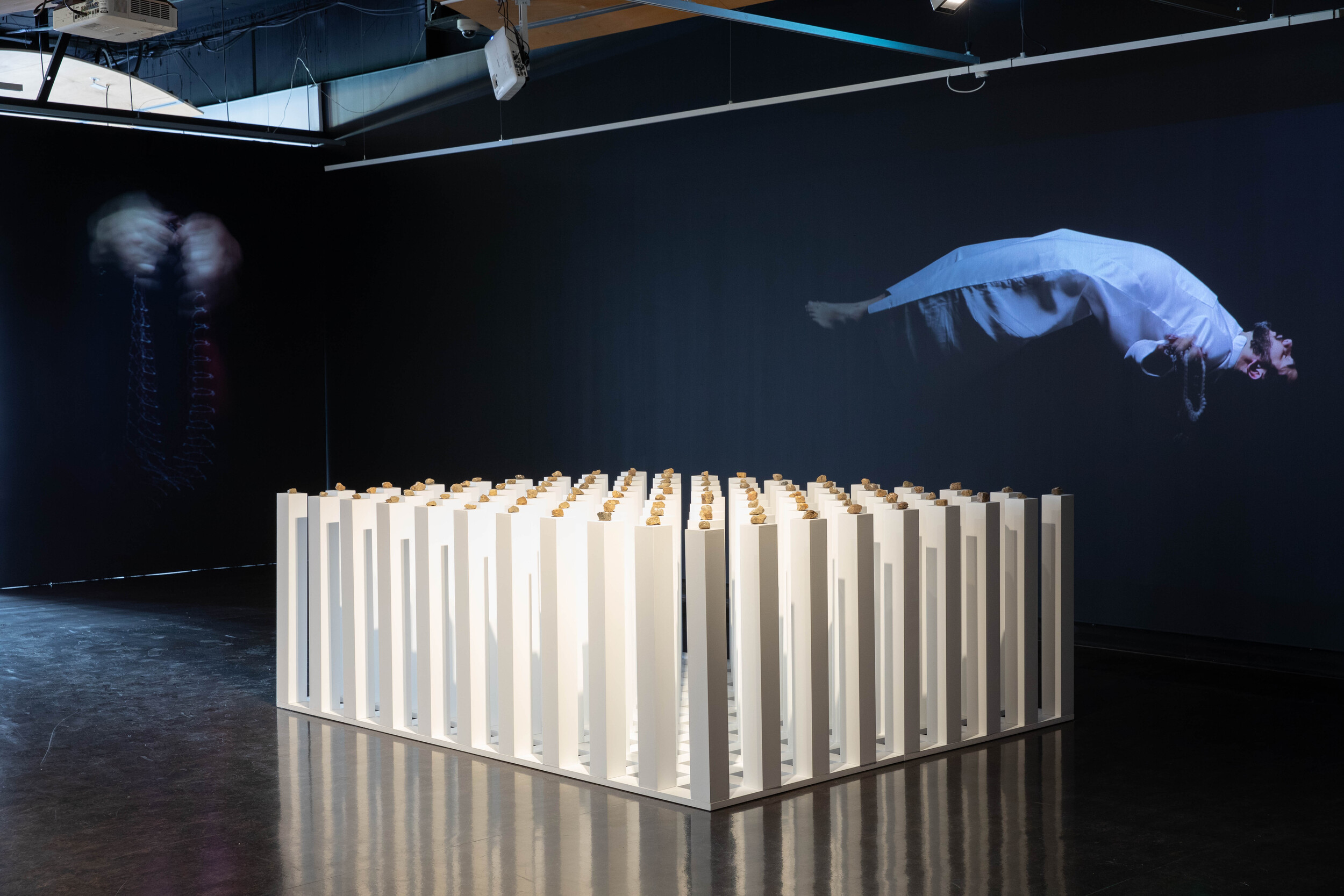
Installation view of Ayman Kaake, Misbaḥa / The Prayer Beads / مسبحة at Counihan Gallery, 2025. Photo: Simon Aubor
This exhibition was born out of Kaake’s most recent visit home, where his mother asked him the dreaded question that all Lebanese mothers do: “So, when are you going to get married?”
Kaake felt strange about the question. Not because his mother asked (it might have been weirder if she didn’t), but because, as she did, she dangled her bright blue prayer beads in front of their cat. He thought that perhaps the Misbaḥa reminded her that all good Lebanese men are expected to get married, have children and continue the family name—whether queer or not.
While I would normally begin with the work closest to the gallery entrance when viewing an exhibition, with Misbaḥa I started in the middle. The feature installation Stones Will Remain Stones (2025) occupies so much of the gallery that to begin anywhere else feels disingenuous. Nine rows of eleven white, wooden pillars stand in a perfect grid of symmetry. On top of each pillar, there is a stone inscribed with one of the ninety-nine glorifications of Allah. I lean in to read them, but since my Arabic is pathetic at best, I only manage to decipher (اَلرَّحِيْمُ) (The Most Merciful), (اَلْقُدُّوس) (The Most Holy) and (ٱلسَّلَام) (The Giver of Peace) on my own.

Detail of Ayman Kaake, Stones Will Remain Stones, 2025, mixed media installation, 230 x 285 x 100 cm. Photo: Simon Aubor
The installation is mathematically perfect. Each pillar is so precise that from afar they look like skyscrapers of a major metropolitan cityscape. However, the way each stone is perched on top of its white post makes me think of the way prayer beads are threaded on string. This structure is not some hope for urban utopia, but rather a reimagination of the traditional Misbaḥa. Its ninety-nine beads are linked together by the continuing thread of the white foundation, each stone bearing the weight of one glorification. It abstracts the Misbaḥa beyond its typical form, now making it into a vital city centre from which we can view the three primary video works above.
Surrounding the installation are three projected video works depicting Kaake in various states of prayer. The central work See (2025) is the most visually compelling of the three. Kaake is dressed in a white abaya, floating against the black wall, whispering a prayer with a Misbaḥa in hand. There’s something so transcendent about the way he’s reclined and the gentleness with which he recites the Tasbih that I feel compelled to walk between the two overhead speakers like a pendulum swinging back and forth. Here Kaake lies, a perfect vision of peace.
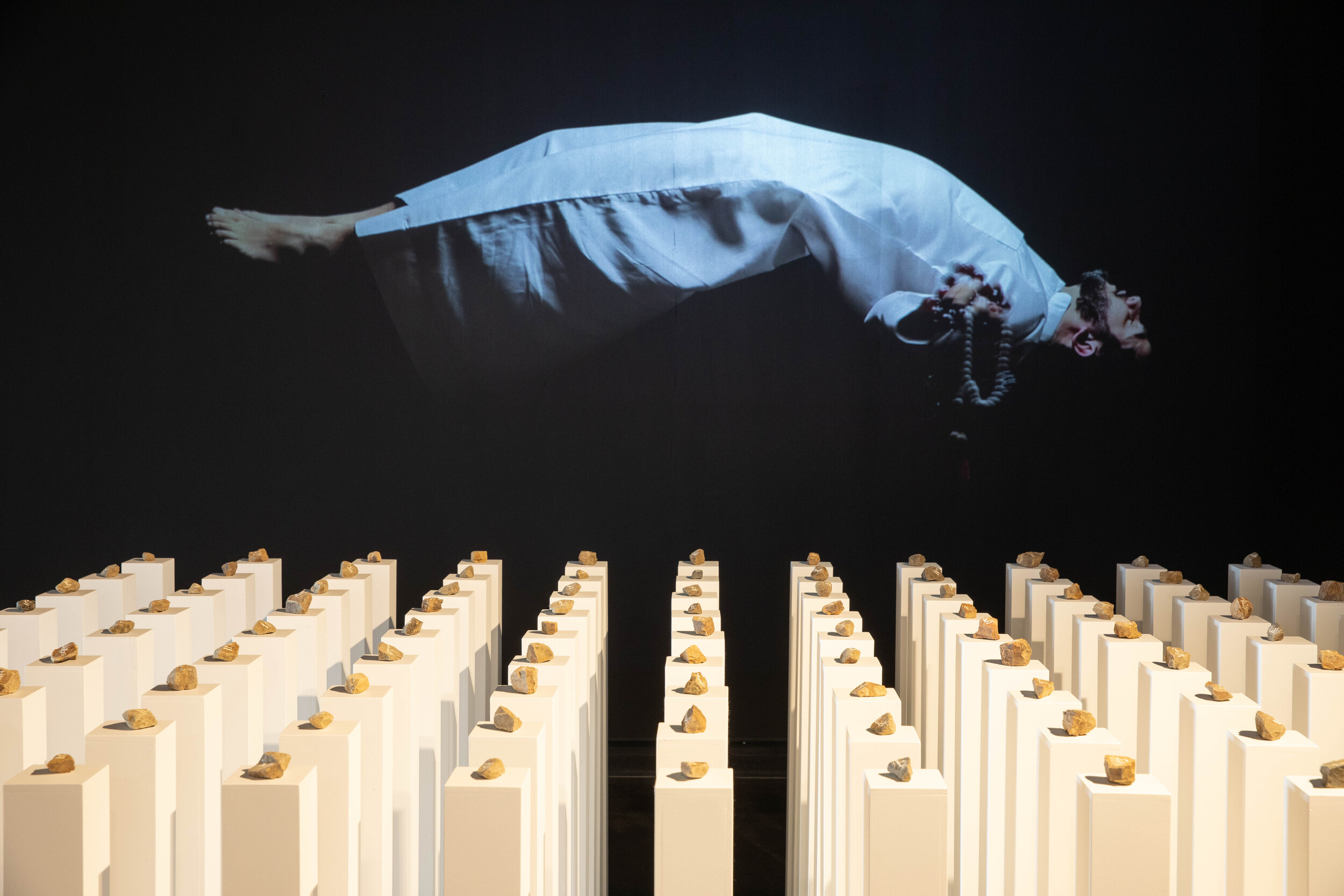
Installation view of Ayman Kaake, Stones Will Remain Stones, 2025, mixed media installation, 230 x 285 x 100 cm (foreground) and See, 2025, single channel video, 6 minutes 47 seconds (background). Photo: Simon Aubor
On the left wall plays Repeat (2025) a layered projection of Kaake’s hands desperately fumbling with a large, red Misbaḥa. He seems nervous as he moves each bead along its string and—coupled with the lack of sound or subtitles in this work—I feel like he has something to hide and I’m intruding on a private moment of prayer. In contrast, Read (2025) which plays on the opposite wall, shows Kaake aggressively rustling several Misbaḥa between his hands. They slip and fall down his fingers in bunches, the weight of them all too much to hold.
Kaake represents three ways in which queer Arab men can conceal, or accept, their own identity. In See, it is a peaceful and enlightened acceptance of self; in Repeat, a tense admission of guilt or nervous self-reflection; and in Read, an angry projection of faith. Kaake does not pass judgement on those who feel like they must hide behind objects of masculinity or faith or suppress their identity through bouts of rage. He acknowledges that navigating life in between laws that do not accept your existence resembles what can only be described as the stages of grief. After the initial denial, rage or bargaining have passed, what follows is acceptance. As I watch Kaake float peacefully above his built city, I like to think that is where he is.
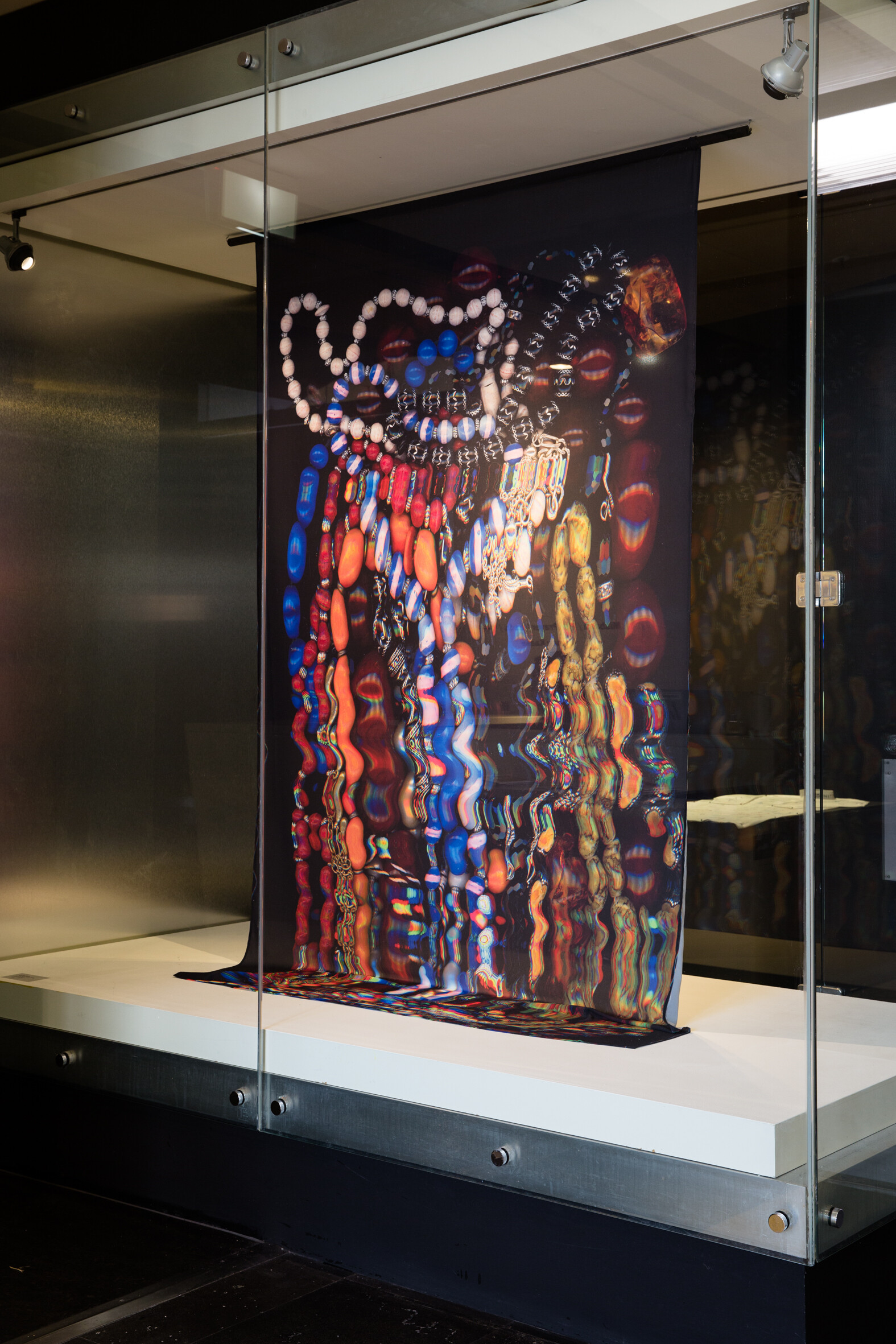
Installation view of Ayman Kaake, The Prayer Beads, 2025, print on fabric, 140 x 240 cm. Photo: Ayman Kaake
I conclude my visit with The Prayer Beads (2025) a digital print on black crepe fabric that hangs just opposite the reception desk. Dozens of vibrant, entwined Misabeḥ cascade down the fabric, their beads digitally distorted and stretched, and pool in a spectacular blur of colour at the bottom of the print. While it is not the only time Kaake manipulates the Misbaḥa, I think this is my favourite. He has already situated the Misbaḥa as a mask that projects masculinity and culture, which queer people can use to conceal their true identities. In this work, the prayer beads maintain their primary physical form, but the way each bead is pulled and stretched further down the image is a symbol of this mask slipping. Kaake has started to unravel their threads, and we, the viewer, are frozen in the split second before they all scatter across the floor.

Detail of Ayman Kaake, The Prayer Beads, 2025, print on fabric, 140 x 240 cm. Photo: Ayman Kaake
It is at this point of both entry and exit that Kaake reminds us of our power. That while we cannot single-handedly dismantle the larger political framework on which queer prejudice has been built, what is within our capacity is to shape the traditions and practices around us as the cultural tide shifts.
Celine Saoud is a second-generation Lebanese writer and arts worker based in Naarm. Her creative practice analyses cultural and familial traditions, particularly through shared experiences in diaspora. Celine is continuously inspired by how matriarchs and community shape cultural practices.
